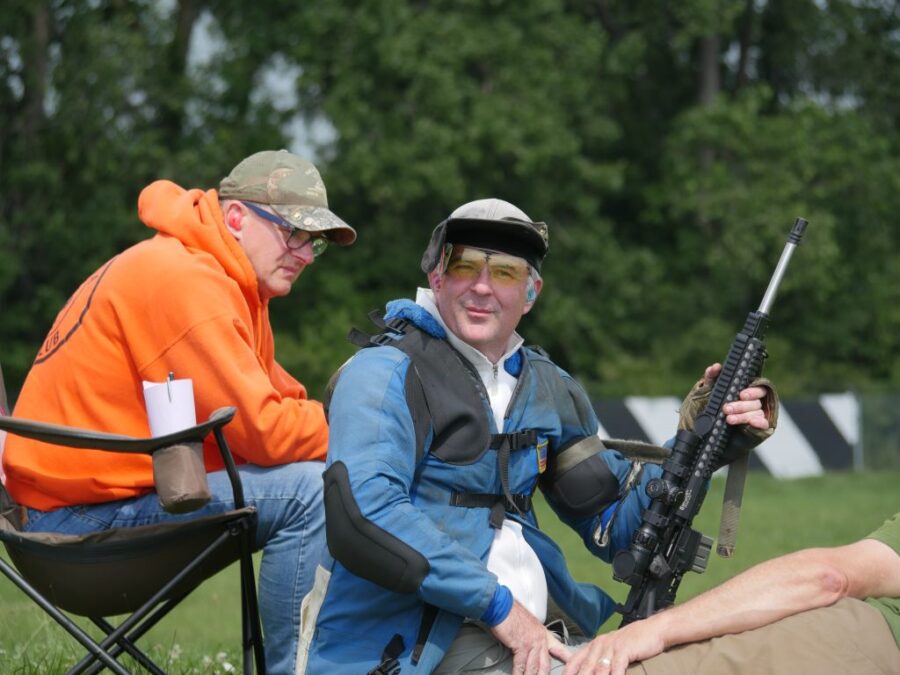Self-Defense Myth Busting
Last month in this space we laid out the basic legal formula for the justifiable use of lethal force, focusing on the foundational elements of Ability, Opportunity and Jeopardy. This month, let’s look at some of the more prevalent myths and misconceptions about this topic you might have to clear up for customers — especially those who have recently joined our ranks.
Felony Stupid
Perhaps the most common bad advice is, “If you shoot the bad guy on the porch, drag him inside and put a kitchen knife in his dead hand before you call the police.”
Any customer who expresses such a thing needs a talking-to. Tell him what he’ll be letting himself in for.
First, his subterfuge will almost certainly be discovered. Even if the customer lives in “Mayberry RFD,” it won’t be bumbling Deputy Barney Fife doing the investigation: It will be experienced homicide investigators from the county sheriff’s office or perhaps the state police, with access to multi-million-dollar crime labs and highly skilled crime scene technicians. Skin cells, body hairs, micro-fibers, DNA and bloodstains that escaped the naked eye of the person who altered the crime scene will all be discovered.
The person who followed this terrible advice is now prima facie guilty of Alteration of Evidence, a crime in and of itself. It will be easy for the prosecutor to convince a grand jury to indict for manslaughter since most people associate this sort of behavior with someone who panicked and shot the wrong person and is trying to cover it up.
Perjury, also a felony in and of itself, is clearly implied in this advice. Even an indictment for premeditated murder is on the table, under the legal principle that subsequent alteration of evidence can be construed as an indication of prior planning of a crime.
Indeed, the giving of the advice is construable as a crime in and of itself: Subornation of perjury, that is, exhorting or advising someone to lie under oath. Where I come from, it’s a Class 4 felony. If the giving of the advice is construable as a felony, isn’t it the very definition of “felony stupid”?
Perhaps the most common bad advice is, ‘If you shoot the bad guy on the porch, drag him inside and put a kitchen knife in his dead hand before you call the police.’
“Flight Equals Guilt” & More
How many times have we all heard someone suggest, “If you have to shoot someone in self-defense, just look around for witnesses and if you don’t see any, leave; that will save you all the legal hassle.”
Such action triggers “flight equals guilt” — a presumption both the prosecution in a criminal case and the plaintiff’s lawyer in a civil case will be allowed to argue to a jury. Any juror who reads the Bible will likely flash to Proverbs 28:1, “The wicked flee though no one pursues, but the righteous are as bold as a lion.” It’s a whole lot easier to exonerate a “righteous lion” than “the wicked.”
I remind my students who’ve heard this garbage that the prisons are full of people who looked all around for witnesses and didn’t see any until they appeared to testify against them at trial. And let’s not forget — surveillance cameras are everywhere today.
The person who flees the scene has a very uphill fight in court ahead of them. The best advice is for the customer involved in such a thing to immediately get to the phone and call it in. This will generally get that person listed as the “victim/complainant,” which is a whole lot better starting point for the investigation than “the suspect a witness says shot someone.”
What if the incident occurs on a remote hiking path somewhere far from cell phone towers? The customer should still dial 911. If nothing else, the phone will record — to the second — the time the customer did attempt to call the police and emergency medical service — the act of a concerned citizen and survivor, as opposed to a criminal perpetrator. If in a rural area where the customer must leave the scene to seek help, they should set their GPS for the nearest police station. If the customer is intercepted by police on the way, the GPS will show they were, in fact, en route to the police station to report … again, an act associated with innocence rather than guilt.
‘If you have to shoot a bad guy, make sure he’s dead so he can’t lie about what happened.’ Good Lord, do the people who give this terrible advice ever think?
… And Still More Bad Advice
Finally, there’s, “If you have to shoot a bad guy, make sure he’s dead so he can’t lie about what happened.” Good Lord, do the people who give this terrible advice ever think? Let’s say a solid hit dropped the bad guy in place, and he dropped his gun. He’s down and out of the fight, apologizing and begging you not to shoot him anymore. Is any moral person ever going to say, “Well, dude, I’d like to let you live, but I’ve heard people like you lie about people like me, so …” BANG!
Anyone who can do that isn’t one of us good guys or gals anymore.
Need an example? Google “Jerome Erslund, Oklahoma City.” He was the pharmacist who reacted to a couple of teenage holdup men by drawing and firing his Taurus Judge .410/.45 revolver, hitting one of them in the head with a single buckshot pellet. That one fell, and the other fled. Erslund chased the second robber down the street, firing as he went, and sending bystanders ducking from the wildly fired pellets that never did hit their target. Returning to the pharmacy with his empty revolver, he saw the first young perpetrator lying supine and motionless on the floor, set down his empty Taurus and picked up a loaded KelTec P3AT. He then walked over to the prostrate teen and pumped a few .380 bullets into his torso, with fatal results.
I spoke with the prosecutor who convicted him of murder. He had no problem with the first shot. He felt — and convinced a jury — the fatal, finishing shots were based on malice, not necessity. Mr. Erslund is now a long-term resident of the Oklahoma State Penitentiary.
There are, of course, still more myths. Those of us in the industry have an ethical duty to expose them and warn our customers about them. Next month, we’ll finish the series with some more of the common myths and misunderstandings to be aware of and to be dispelled.





